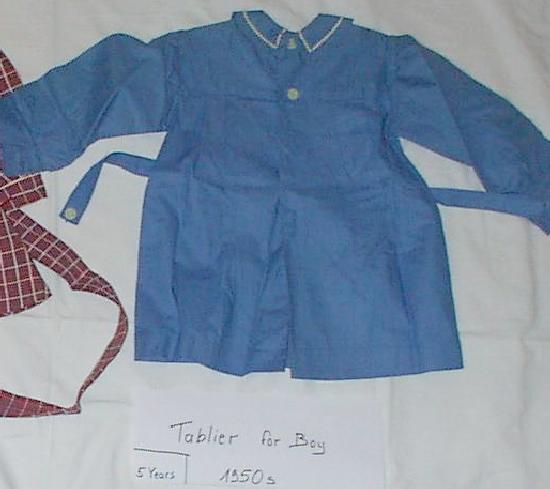
Figure 1.--This is the back of a typical girls' smock worn during the early 1950s. Note the long waistband which could be tied in the bavk in a bow.


Figure 1.--This is the back of a typical girls' smock worn during the early 1950s. Note the long waistband which could be tied in the bavk in a bow. |
Many of the differences between boys' and girls smocks were most obvious in the back of the smock. The most obvious was
the much longer waistband on the girls' smocks which was used to tie a bow in the back. This very common conventioin was very common and easily observable. These back bows were also common on girls' dresses. Boys' did not wear such bows, except on the rompers worn by younger children. Boys' smocks on the other hand had
a shorter waustband with a button. Boys smocks generally had only two buttons in the back. One at the neck and one half way
down the top of the smock. The pleating on the boys' smock might also be seen at the back. But as noted on the front page, the pleats were only noticable if freshly ironed. The collars might also be different
in the back. A collar did not go completely around the neck. This was because the collar was often divided at the back where the buttoning was.
HBC at this time is unsure just what girls' smocks were like when they were first instituted for regulastion schoolwear in 1871. We know that the smocks were quite long. We believe that the same styles were worn until well after World War I (1914-18), but our information is still too limited to make any assessment at this time.
A girls' smock generally had more detailing than a boys's smock. Most of the detailing, however was on the front. Many of the differences between boys' and girls smocks were most obvious in the back of the smock. The most obvious was the much longer waistband on the girls' smocks which was used to tie a bow in the back. This very common convention was very common and easily observable. These back bows were also common on girls' dresses. I was not yet positive about the back of girls' smocks. I did not know if they were completely open at the back or only open at the bodice part and that girls stepped into them. A French reader, however, tells us thst one of the characteristics of the smock was that it was open at the back.. Socks were never made with completely closed skirts. Such a garment would be a dress. Such closed smocks have never existed." The collar on back buttoning smocks did not go completely around the neck. This was because the collar was divided at the back where the buttoning. Thus the rounded collar might also ne seen at the back. Girls' smocks like boys' smocks, however, did not always have collars.
School smocks did not decline as quickly for girls as they did for boys. But they are now also not worn at mnost sare schools, although they are still worn at a few private schools. A French reader reports that a play smock was also popular during the summer for girls. They were for girls up to about 8 years of age. It was called a "tablier bain de soleil" or simply "bain de soleil" -- or sun smock. It was made rather like a pinafore open at the back. It was especially popular during the 1980s, but seems to have first appeared in the 1930s. In the film Après la guerre, a boy tries to disguise himself as a girl by wearing one of these "tablier bain de soleil".

Figure 2.--A boys' smock, if it had a collar, would normally have a pointed collar which was also observable at the back. Also the waistband was normally quite short as it buttoned rather than tied in the back. |
HBC at this time is unsure just what girls' smocks were like when they were first instituted for regulation schoolwear in 1871. We know that the smocks were quite long. We believe that the same styles were worn until well after World War I (1914-18), but our information is still too limited to make any assessment at this time.
The differences between boys' and girls smocks were especially notable at the back of the smock. The most obvious was the that the waist bands of bpys' smocks were much shorter and byoned in the back to the othder emd of the waistband rather than tieing in a bow like a girls' smock. Boys' did not wear such bows, except on the rompers worn by younger children. Boys smocks generally had only two buttons in the back. One at the neck and one half way
down the top of the smock. The pleating on the boys' smock might also be seen at the back. But as noted on the front page, the pleats were only noticable if freshly ironed. The collars, if the smock had a collar, might also be different
in the back. A collar did not go completely around the neck. This was because the collar was often divided at the back where the buttoning. Thus the generally pointed collars on boys' smocks might be observable in the back as well as the front.
